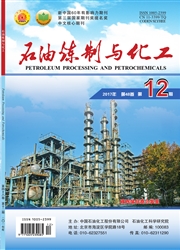

 中文摘要:
中文摘要:
换热网络是工艺装置中重要的能量回收子系统,优化换热网络能够有效提高能量回收利用效率。在优化改造之前,分析换热网络的节能潜力,指出节能量,评价节能难度,对指导换热网络的优化改造显得十分必要。基于夹点技术,本研究通过分析实际热公用工程用量和最小 热公用工程用量之间的相互关系,将实际热公用工程与最小热公用工程的差值作为换热网络优化改造的节能量,探讨提出将换热网络节能量与夹点区间热物流热量的比值作为节能潜力指标,用于评价换热网络改造的节能难度,并研究该指标在不同工艺装置热集成上的应用。以延迟焦化装置和喷气燃料加氢装置为案例,对其进行换热网络热集成改造,改造后增加热量回收4 537 kW,节能效果显著。
 英文摘要:
英文摘要:
Heat exchanger network (HEN) is an important subsystem for energy recovery in process units. The energy utilization efficiency can be effectively improved by optimizing HEN. In order to guide the retrofit of HEN, it is necessary to analyze HEN, point out the energy saving potential and evaluate the difficulty of the energy saving. Based on Pinch technology, the relationship between the actual heat utility consumption and the minimum heat utility requirement is analyzed, and the difference value of them is regarded as the energy saving potential of HEN in this paper. On this basis, an energy saving potential index for evaluating the difficulty of the energy saving is presented, which is the ratio of the energy saving potential to the heat of hot streams in the Pinch section. In addition, the proposed index is applied to the heat integration between different process units. A case study of HEN of a delayed coking unit and a fuel hydrotreating unit is carried out, and the result shows that the energy recovery is increased by 4 537 kW.
 关于陈清林:
关于陈清林:
 关于张冰剑:
关于张冰剑:
 同期刊论文项目
同期刊论文项目
 同项目期刊论文
同项目期刊论文
 A reactive distillation process with a sidedraw stream to enhance the production of isopropyl acetat
A reactive distillation process with a sidedraw stream to enhance the production of isopropyl acetat A hydraulics-based heuristic strategy for capacity expansion retrofit of distillation systems and an
A hydraulics-based heuristic strategy for capacity expansion retrofit of distillation systems and an 期刊信息
期刊信息
